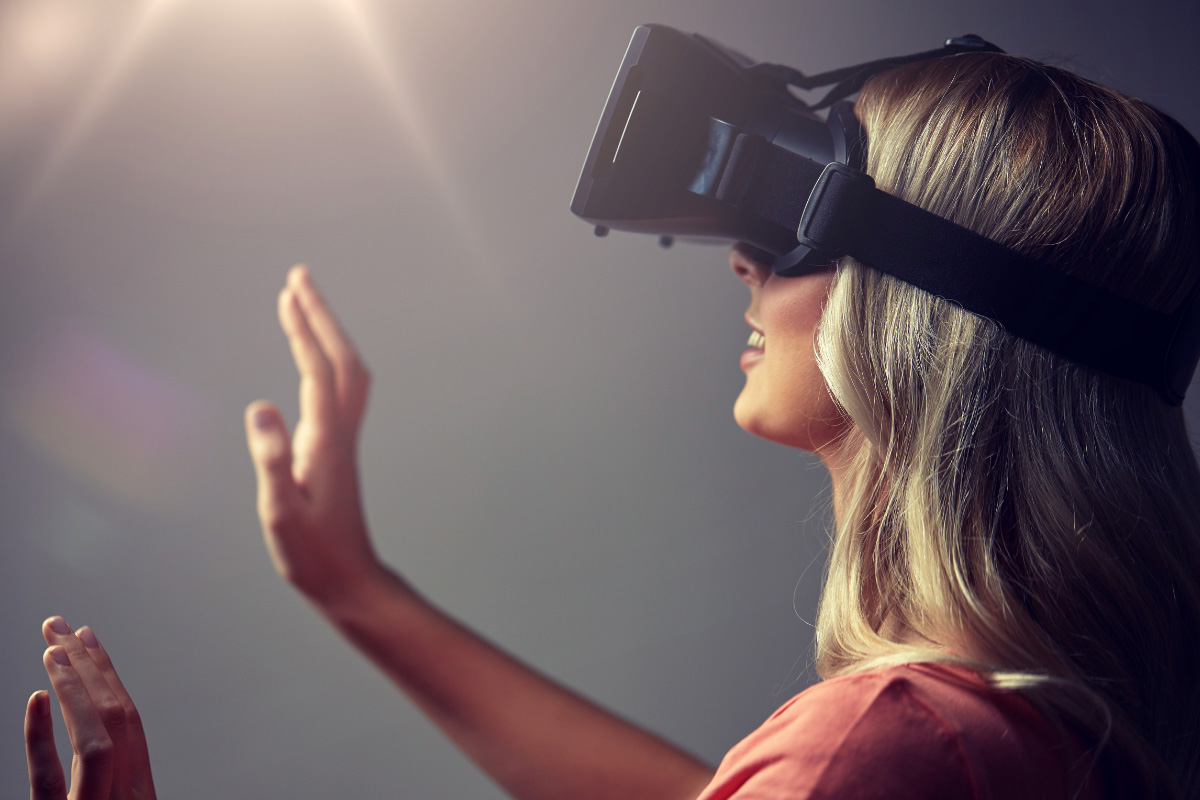Ed Fries, co-founder of the Xbox project, has a private collection of vintage European postcards. The artwork on them portrays flying taxis, students gaining knowledge through wires attached to their heads, and people visiting the moon like it was just another trip to the store. This is how people 100 years ago predicted we would be living today.
While we did get to the moon (it wasn’t quite a grocery run, but still…), these cards show that our ancestors’ imaginations were clearly limited by the world around them. Computers, smart phones, virtual reality (VR), augmented reality (AR), autonomous cars – these things were beyond anything they could ever have dreamt possible. And the same can be said for us. We simply cannot imagine what technology will be like in 100 years. But we can predict one thing: To become a mainstay of everyday life, it will have to be designed with human factors in mind.
Technology – Human-Centered Design = failure.
When it comes to today’s technology, VR and AR are thrilling. The worlds you can visit and the things you can do are limitless. But just because these devices, their apps and experiences are amazing, doesn’t mean they’re without user experience flaws.
Take a VR headset, for example. If you’ve ever played a VR game, chances are you’ve experienced “headset fatigue” which is similar to motion sickness. This is because what’s going on in your virtual world isn’t what’s happening to your body. VR, after all, does an excellent job of fooling your senses. A scene that appears to stretch on forever is actually right in front of your eyes. You may be walking down a road, but in reality, you’re just standing in your living room. Whether you become dizzy, get a headache, or feel nauseous, these general feelings of discomfort can ruin your fun… and the rest of your day.
If you think that’s bad, imagine if your job was to design VR apps. Designers must spend hours upon hours creating and navigating virtual landscapes. If they don’t take frequent breaks, they can suffer from headset fatigue along with a myriad of other issues including eye strain and joint pain. Some developers have even reported keeping “puke buckets” near their work areas while designing for virtual reality. Many say that these symptoms are reduced the more time spent using a headset, but some never quite get used to them.
Great strides have been made by some VR companies to correct this. Head tracking technologies have helped to refresh on-screen images at faster rates, making the experience more comfortable for users. But it’s still not perfect, and many issues are lingering. For example, users of some gaze-controlled systems often find themselves frustrated that everywhere they look, a new function is activated. Other users find themselves in completely “unergonomic” positions when turning their necks during interactions. Many don’t even realize how much they’re hurting their joints. And the list goes on.
Various other glitches plague AR devices, which attempt to intertwine a real environment with an overlay of the virtual. Poor resolution and inaccurate computer vision are common problems AR users face.
The truth is that many issues with VR and AR headsets, apps and experiences emerge during the design process. There’s often a disconnect with what users need versus what they say they want. There is often a lack of understanding of human perception and expectations. But the good news is that these problems can be fixed by using Human-Centered Design methodologies. In fact, they must be fixed, because the VR and AR industries are quickly evolving, and the potential application of this technology is limitless.
VR and AR are not just about video games anymore.
VR and AR have moved beyond the realm of gaming, and people are realizing that these devices are not just toys. In fact, many companies are already using VR for safety training. After all, it’s a perfect option for placing employees in environments that simulate the dangerous conditions that they will need to be prepared for and that can arise on hazardous jobs sites (such as oil rigs). Similarly, VR is being used to train astronauts for space and for visiting other planets. It’s a great option, as we can’t replicate those conditions easily and safely on earth, but we must be prepared to be safe and successfully complete the mission.
Another exciting application of VR has been with the integration into the changing landscape of healthcare. Medical students are using VR headsets to further their education and skills by placing them in training situations that evoke a level of realism without placing anyone at risk during the learning phase of a new student. And, of course, there’s the patients. From companies like Floreo, which is using VR to teach social and communication skills to people with Autism, to Karuna, which uses immersive VR technology to treat chronic pain. VR is quickly becoming a solution for health issues when other methods fail. There has also been a call for more business apps, as people wish to use them for everything from corporate training to marketing and industrial design.
AR has been in the news quite a bit recently, as well. In fact, in July, Lowe’s announced that it started testing AR and VR so that customers can “visualize and ‘feel’ a large home improvement product in the context of the customer’s living space”. Home Depot and Walmart are rumored to be working on similar experiences for their customers too. This will become the norm and will be how consumers will eventually expect to shop!
VR and AR need to progress more seamlessly with everyday life because this technology has incredible potential to help solve problems for real people in the real world. Using Human-Centered Design, they can do just that. If designers of complex VR and AR headsets, apps, and experiences can put themselves in the shoes of their users so that they can address their needs and expectations, success is attainable. Now this is not to say that Human-Centered Design should run these companies. But when it’s integrated with business strategy, design, programming, marketing, and so forth, it can help a company connect closely with its customers. By bringing entire teams together and aligning the goals of each department, Human-Centered Design will solve user experience issues and help to release winning products that users will love. Human-Centered Design for VR and AR will drive the bottom line for the companies that develop these technologies because they will be able to serve their customers’ needs effectively.
Human-Centered Design is here to stay – especially when designing for virtual reality.
Companies like Nike, Apple, Coca-Cola, Ford, IBM, Intuit, Procter & Gamble, Starbucks, Target, Walt Disney, Whirlpool, and so many others are very aware of the importance of Human-Centered Design, and they have already committed to design thinking from the CEO down. It’s no secret that companies using Human-Centered Design methodologies not only grow faster, but also have higher margins than their competitors. This makes them attractive to shareholders and pushes their stock prices higher. VR and AR companies need to take note of this, as they are predicted to become a $25 billion market by 2021.
“The future is changed by people who have a crazy idea and follow it wherever it may lead,” Ed Fries once said. “That’s why I like hanging out with wacky people… One of them is probably going to change the world.”
Ed is correct. VR and AR may have once sounded like crazy ideas – things that humans couldn’t even dream were possible. But we made them happen, and today this technology has the potential to change the world for the better. It just needs a little more human help to get there.


